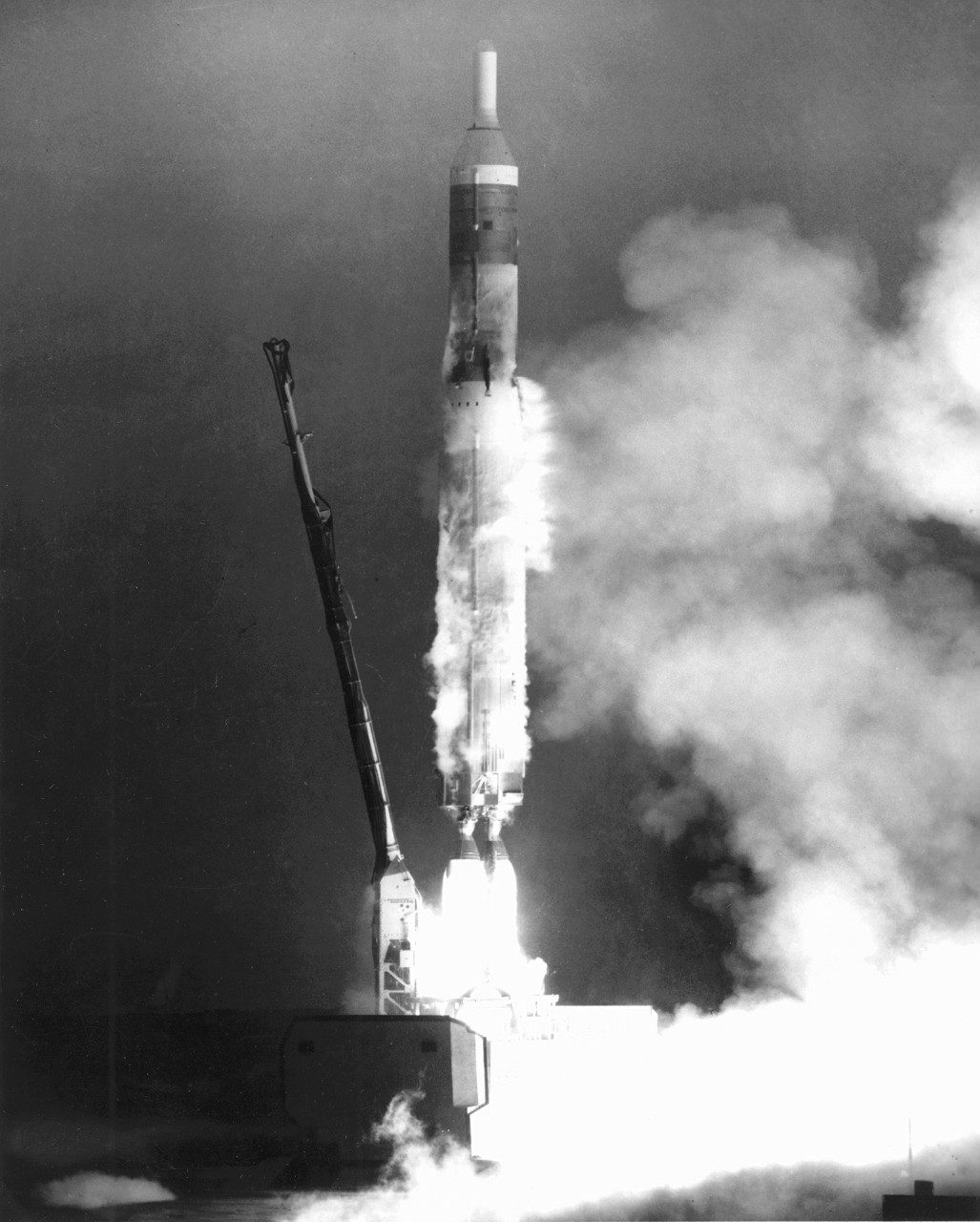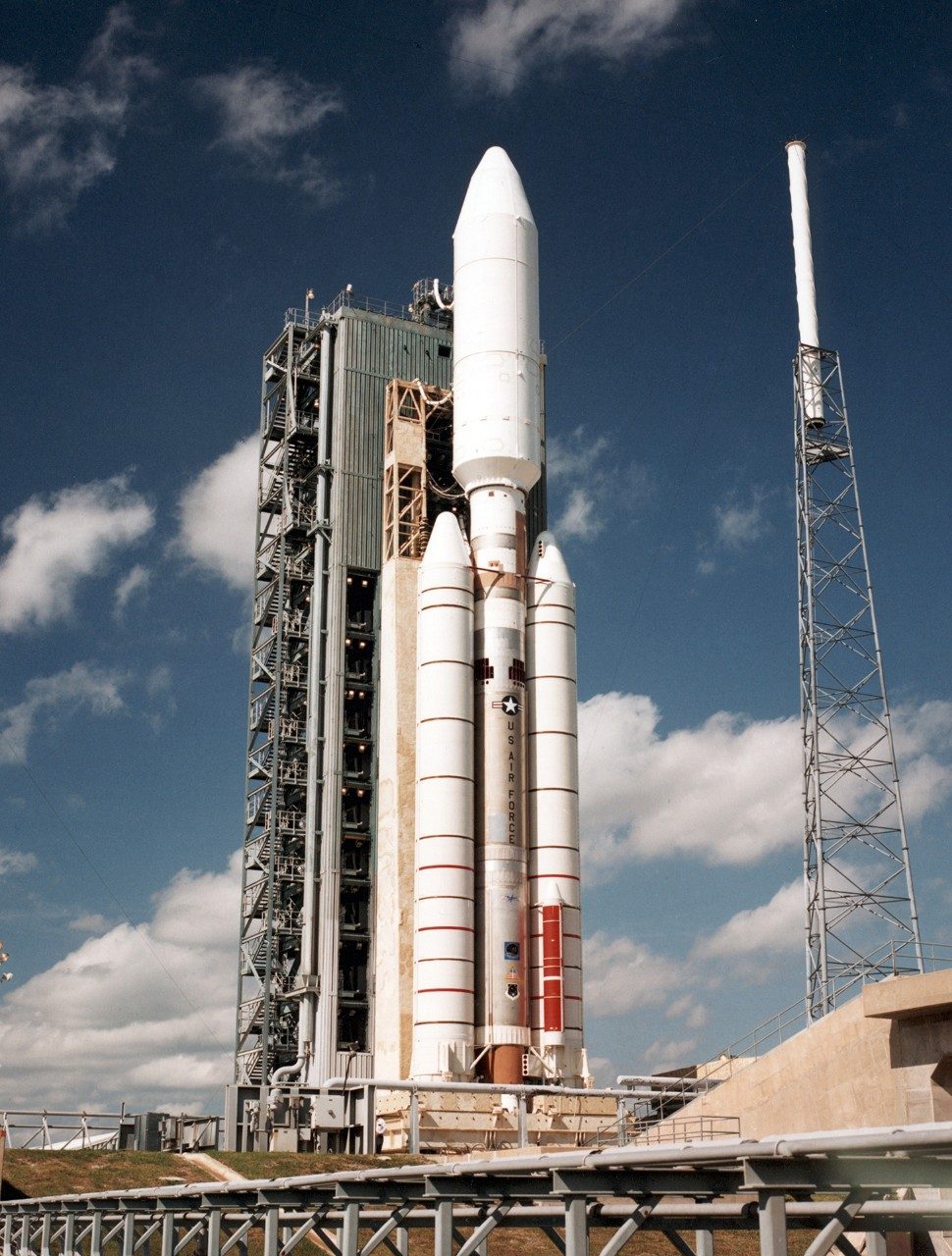Titans, quite simply, were the rockets that launched the future
The Martin Company’s launch vehicle built a five-decade legacy stretching back to the earliest rockets designed and built in the United States. The nation’s Intercontinental Ballistic Missile (ICBM) program; Project Gemini, NASA’s second human spaceflight program; the Mars Viking landers; the Voyager deep space probes; communications and reconnaissance satellites—all of these programs and more relied on Titan rockets for a safe and dependable launch.
In 1956, in the early years of the Space Race, The Martin Company won the contract to design and build the Titan I and then Titan II ICBMs, which grew to become an unprecedented multi-stage launch vehicle that would carry spacecraft and astronauts beyond the bonds of earth for decades to come. Two years later, the first Titan rocket arrived at Cape Canaveral where it would be rigorously tested by an independent division, separate from the team that designed the rocket, maintaining objectivity and avoiding any preconceived notions about what should work and how. This testing procedure soon spread to other organizations within Martin.

It Worked Beautifully
Flying atop a highly modified Titan II ICBM, NASA’s Gemini Manned Spaceflight program achieved 100 percent mission success. Titan’s exemplary record established a standard for perfection, safely launching two-man crews into orbit 10 times from 1965-66, one of the most dynamic and fast-paced periods in the Space Race. When looking back at the decades that spanned the 1950’s to the sixties, it's not at all a stretch to say that Titan played a pivital role in how America won the Cold War because of the advantages it had from space.
“The Gemini Titan launch vehicle . . . was really just gang busters. It developed beautifully; it worked beautifully,” commented Martin Marietta historian Bill Harwood.
In addition to its safety record, the Titan program was cost-effective. When the roll out of the new Titan II rockets was taking longer than planned, and the program looked like it would come in over budget, David Levine took over as program manager and moved to Little Rock to devote himself to getting Titan back on track. Levine later remembered the team effort that turned things around: “We finished the program on schedule, and we under-ran the cost by $35 million, which we refunded to the government. And I’m very, very proud of that.”

To Mars and Beyond
In 1976, Titan IIIE rockets launched the Viking Mars landers, the first craft to land on the red planet—built in the same Denver facility as the original Titan rockets. And in 1977, Titan IIIE launched the Voyager deep space probes which journeyed to Saturn, Jupiter, and now beyond the edge of the solar system. Voyager carried with it a golden record encoded with audio and visual information about Earth and the people who live here, should it ever be encountered by extra-terrestrial intelligence.
The Titan family of rockets continued to support NASA and U.S. Department of Defense missions for nearly 50 years, and in 1990, the Titan IV was developed to become the nation’s most powerful launch vehicle capable of boosting critical national security satellites weighing over 12,700 pounds to geosynchronous orbit. Titan IV would become the most powerful and final version to fly when the program was retired after delivering National Reconnaissance Office payload to orbit on October 19, 2005. In all, 368 Titans were flown, enabling unprecedented capabilities that ranged from Earth reconnaissance and military and civil communications to human and robotic exploration. As Titan flew its final mission, mission director Colonel Chip Zakrewski said it best, “It was a picture-perfect ending to the great Titan era.”
Sources and Additional Reading
- Harwood, Bill. Lockheed Martin Oral History conducted by Walter Boyne. November 5, 2009.
- Harwood, William B. Raise Heaven & Earth. New York: Simon & Schuster, 1993.
- LeVine, David. Lockheed Oral History Database. Walter J. Boyne, inteviewer. May 21, 2009.
- The National Reconnaissance Office. “NRO Successfully Launches Last Titan from Cape Canaveral.” https://www.nro.gov/news-media-featured-stories/, accessed July 26 2012.
- Schefter, James. The Race. New York: Anchor Books, 1999.
- “Titan Rocket.” Encyclopedia Britannica.http://www.britannica.com/EBchecked/topic/597112/Titan-rocket, accessed 26 July 2012
- Underwood, Joan. Interview by The History Factory. July 16, 2012. Washington, D.C.




